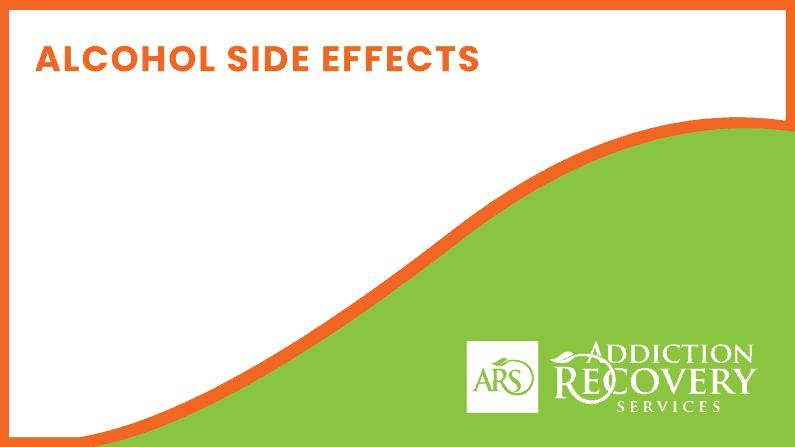
When alcohol is consumed, it enters the stomach where 25% is immediately absorbed into the bloodstream. The rest of the alcohol begins to be broken down in the liver. Once alcohol has entered your bloodstream, it remains in your body until it is processed. About 90-98 percent of alcohol that is consumed is broken down by the liver. The other 2-10 percent of alcohol is eliminated in your urine, breathed out through your lungs, or excreted in your sweat.
Because the body goes to significant lengths to eliminate alcohol, as it is a toxin, the increase in consumption has damaging effects on the body. “The rate of all alcohol-related ED visits increased 47 percent between 2006 and 2014, which translates to an average annual increase of 210,000 alcohol-related ED visits,” (National Institute on Alcohol Abuse and Alcoholism, 2022).
In New Hampshire, alcohol combined with fentanyl is responsible for the second highest rate of overdoses in 2020.
Source: https://www.dhhs.nh.gov/dcbcs/bdas/documents/dmi-2020-overview.pdf
Using alcohol long-term can lead to severe chronic illness and death. “Between 2011 and 2015, the leading causes of alcohol-attributable deaths due to chronic conditions in the United States were alcohol-associated liver disease, heart disease and stroke, unspecified liver cirrhosis, upper aerodigestive tract cancers, liver cancer, supraventricular cardiac dysrhythmia, AUD, breast cancer, and hypertension,” (National Institute on Alcohol Abuse and Alcoholism, 2022).
Alcohol And Liver Damage
Table of Contents
The liver is the largest organ in the body, weighing about 3.3 pounds. As the metabolic
crossroads of the body, the liver filters circulating blood, removing and destroying toxic substances. Most of the alcohol that people drink is metabolized in the liver. The major way for alcohol to metabolize involves the enzyme alcohol dehydrogenase (ADH). This enzyme converts alcohol to acetaldehyde through a chemical process called oxidation.
Symptoms of liver damage do not usually appear until the damage is quite extensive. The liver can only process a finite amount of alcohol at a time. When someone has too much to drink, the alcohol left unprocessed by the liver enters the bloodstream. Once the alcohol begins to circulate in the blood and reaches the brain, intoxication occurs. Chronic alcohol use causes the destruction of liver cells, which leads to scarring of the liver (cirrhosis), alcoholic hepatitis, and cellular mutation that may lead to liver cancer. These conditions often progress from fatty liver to alcoholic hepatitis to cirrhosis.
Alcohol and the Central Nervous System
The Central Nervous System (CNS) is a complex system of nerves that control and regulate the activities of the body. In humans, the CNS also helps the brain, brain stem, and spine to perform certain simple actions like walking and speaking. The brain is affected in several ways by alcohol, but the following are the different ways alcohol changes the CNS:
- Contracts brain tissues, resulting in actions being performed slower and with much more difficulty.
- Destroys brain cells
- Depresses the central nervous system
- Creates serious problems with cognition and memory
Short-Term Side Effects Of Alcoholism
In as little as 20 minutes, changes in the mental state, behavior, and body can occur when drinking alcohol. How long it takes to become addicted to alcohol varies depending on the person, but alcohol dependence happens when a person cannot control their intake of alcohol. Here is a list of side effects to recognize if you or someone you know may be an alcoholic:
Mental Health Side Effects
- Depression – Alcohol is a natural depressant so even one drink of alcohol can increase feelings of sadness and hopelessness.
- Anxiety – This most often occurs in the withdrawal stage, when the heart rate increases significantly, prompting feelings of anxiety as the body tries to achieve homeostasis by removing toxins.
- Mood swings – In a sober state, the brain is more capable of regulating emotions, but alcohol inhibits control of emotions and can lead to explosive or bigger expression of moods.
Behavioral Health Side Effects
- Memory loss – Since alcohol damages the brain cells responsible for memory, a person with alcohol dependence may frequently have difficulty recalling past events in their life.
- Driving under the influence or operating machinery under the influence – Inhibitions are lowered when intoxicated, so a person putting the safety of themselves and others at risk by driving or operating machinery while drunk is a side effect of alcoholism.
- Unable to perform work or school functions – Alcoholism is a cycle of being intoxicated or experiencing withdrawal, both of which impair the person’s ability to complete tasks because of the body slowing down.
Physical Side Effects
- Malnutrition – Alcohol is a toxin and dehydrating, so chronic drinking can cause a gaunt appearance.
- Slurred speech – The CNS controls speech, which is depressed when intoxicated, making speech more difficult.
- Nausea or vomiting – Even though the body may adjust to alcohol, it is still a chemical that the body fights to get rid of, so frequent vomiting or nausea is a sign that alcoholism is present.
- Loss of balance – The CNS also controls motor function, so when drunk, performing simple tasks such as standing is impaired.

Long-Term Side Effects Of Alcoholism
Mental Health Side Effects
- Persistent mood swings
- Poor emotional regulation
- Worsening mental health conditions, such as anxiety and depression
Life-related Side Effects
- Loss of job or income
- Strained relationships
- Legal troubles
- Poor hygiene
Physical Side Effects
- Obesity
- Liver
- cirrhosis
- Stomach ulcers
- Heart damage
- Stroke
- Compromised immune system
- Malnutrition
- Hormonal imbalances
- Cancer of the mouth, esophagus, liver, colon, and breast
Alcohol Withdrawal
While alcohol is not a chemical the body needs, the body still adjusts to having the chemical in it. The body then has to re-adjust when the chemical is not present anymore, thus creating withdrawal during this adjustment period. Alcohol mimics relaxation because it depresses the nervous system, which results in the body stopping the production of feel-good hormones because the body appears relaxed when drunk. Chronic alcohol abuse inhibits the neurotransmitter GABA, which is responsible for feelings of relaxation. Here are common symptoms of alcohol withdrawal:
Mild symptoms of withdrawal
- Shaking
- Mild sweating
- Mild anxiety
- Fatigue
- Headaches
- Insomnia
- Nausea
- Vomiting
- Irritability
More severe symptoms include:
- High blood pressure
- Elevated body temperature
- Elevated heart rate
- Irregular heartbeat
- Seizures
- Tremors
- Alcohol withdrawal depression
- Altered consciousness
- Hallucinations
- Delirium tremens (DTs), a disorder in which rapid onset of confusion occurs
Alcohol Poisoning
Drinking too much alcohol in a short period of time can cause alcohol poisoning, which can lead to death. The following are signs that you or someone you know is experiencing alcohol poisoning:
Signs of Alcohol Poisoning
- Confusion
- Vomiting
- Seizures
- Slow breathing (less than eight breaths a minute)
- Irregular breathing (a gap of more than 10 seconds between breaths)
- Blue-tinged skin or pale skin
- Low body temperature (hypothermia)
- Passing out (unconsciousness) and can’t be awakened
Reclaim Your Health at Addiction Recovery Services
Our mission is to never make you feel like a failure, no matter if that’s when you enter or when you are enrolled in IOP. It’s hard to begin, and it can be hard to maintain long-term recovery. We focus on harm reduction rather than complete abstinence because we believe it’s been shown to help people recover effectively.
If you or someone you know is ready to begin alcohol recovery treatment, let us know. Addiction Recovery Services in Greenland has many pathways to recovery, each defined by, and chosen based on, what the person in recovery needs. Give us a call at 978-228-5853 and let’s see about starting you on the way to recovery.
FAQs
What happens to your body when you are an alcoholic?
When you struggle with alcoholism, your body experiences severe damage to the CNS, which controls the function of the brain and spine, and the liver. Because of this ongoing damage, chronic illness, cancer, and brain damage can result.
What is the life expectancy of someone struggling with alcoholism?
People hospitalized with alcohol use disorder are expected to live 24-28 years less than a person who does not drink heavily (National Library of Medicine, 2015).
What are some of the long-term effects of alcoholism?
Some long-term effects of alcoholism are liver damage, cancer, brain damage, and death.

